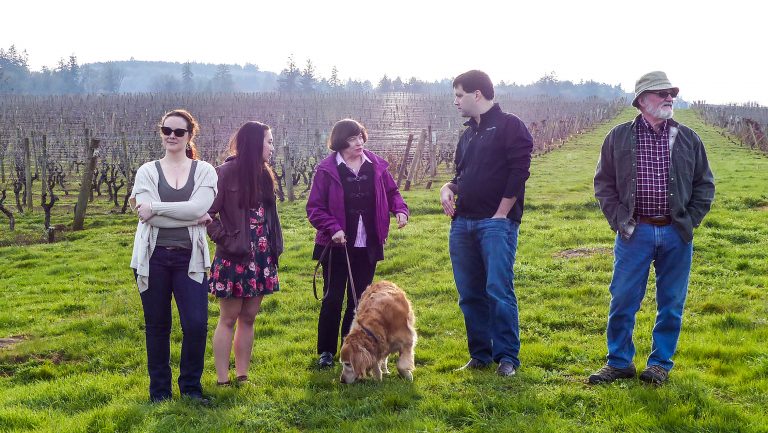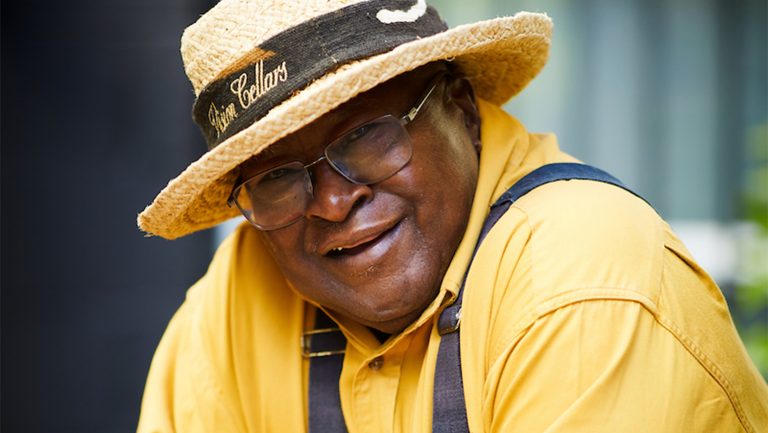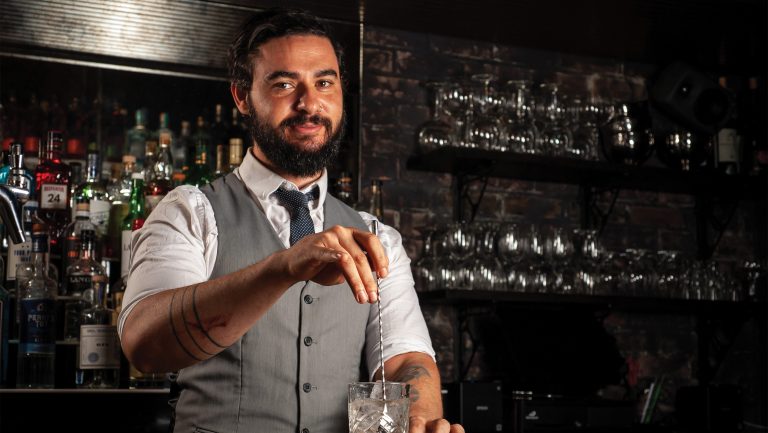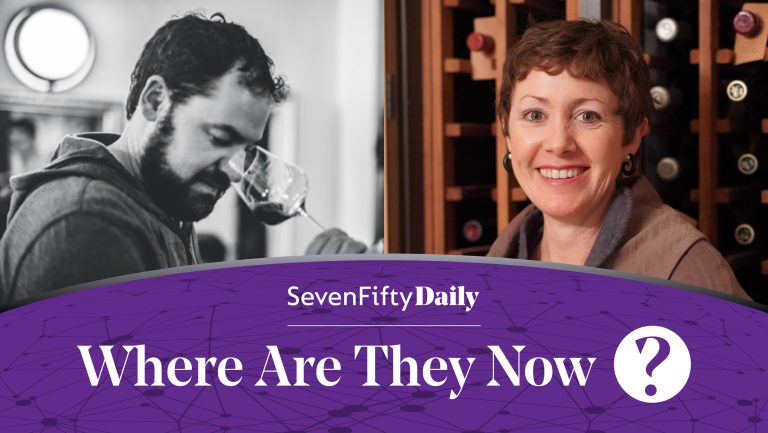In our Unsung Heroes series, we profile behind-the-scenes professionals in the drinks industry who are essential to making businesses function but who don’t normally get the spotlight.
In 2011, Linfield College in McMinnville, Oregon, established the Oregon Wine History Archive, an ambitious project to chronicle and preserve all aspects of the Oregon wine industry. Since then, Linfield—which has also hosted the International Pinot Noir Celebration (IPNC) every summer since 1987—has become a significant hub of wine education. In March of this year, after a $6 million gift from Grace and Ken Evenstad of Domaine Serene in the Dundee Hills, it became the first liberal arts school in the country to offer an interdisciplinary bachelor’s degree in wine studies.
The archive, located in a climate-controlled room at the Linfield library, houses everything from old photos and receipts to wine country guidebooks from the early ‘80s and land-use planning maps. “It’s a sweet space for a college of our size,” says Rich Schmidt, the director of archives. The archive’s online component is growing too. It currently contains over 200 oral histories—video interviews with winemakers, viticulturists, and others immersed in the state’s wine industry. SevenFifty Daily asked Schmidt about the genesis of the project, why Eric Asimov made the cut, and which oral histories will always stick with him.

Don’t miss the latest drinks industry news and insights. Sign up for our award-winning newsletters and get insider intel, resources, and trends delivered to your inbox every week.
SevenFifty Daily: What was the impetus for the Oregon Wine History Archive? And who founded it?
Rich Schmidt: There were many people over the years who indicated a need for what we were doing—to have a place to store and make available these materials before they got destroyed by weather or changing ownership. In 2010-ish, Linfield president Tom Hellie and some of the faculty members here and some members of the wine industry—notably, Susan Sokol Blosser, but also Dick Erath, Dick and Nancy Ponzi, Myron Redford from Amity Vineyards, the Lett family [of Eyrie], and David Adelsheim—got together. There was a handshake agreement that their materials would start the archives.
What kinds of things do you look for?
What we’re really interested in is the nitty-gritty: the receipts for grape sales, the letters to consumers, the tasting notes—as much primary stuff as we can get. It’s sometimes hard for people to part with. These are family farms and businesses.
Does Napa or Sonoma have similar historical archives?
As far as we know, there’s nothing like this in the country, and maybe not in the world. There is a literal wine archive at Cornell—with bottles of wine. There are great wine libraries in Southern Oregon and at Sonoma State. But there’s nobody else doing what we’re doing for a whole state’s industry.
Do you go around actively seeking oral histories and photos? Or do you let the winemakers bring them to you?
You could build an archive and never leave the Willamette Valley, but we wanted to represent the entire state. We started with some Oregon Wine Board–funded trips and spent a week in the Umpqua Valley, a week in the Rogue Valley, a week in the Columbia Valley, and a week in Walla Walla, Washington. [Ed. note: The Walla Walla Valley AVA is located in southeastern Washington and the northeastern corner of Oregon. Walla Walla Valley wineries can get their grapes from Oregon or Washington, or both states.]
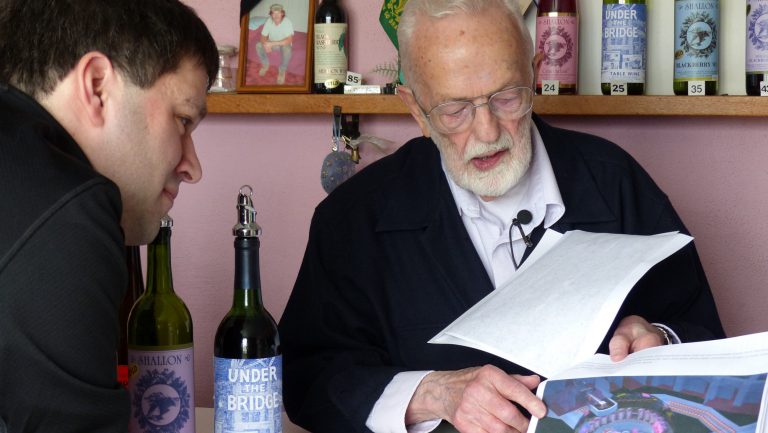
We brought along a portable scanner so we could scan documents and photos and return them. In Walla Walla, we worked on oral history interviews with Whitman College. That’s become the bulk of what we do now—oral history interviews. We did something like 55 interviews last year.
We’re getting to the point where people have heard of us. And that’s awesome! Sometimes we do an interview with someone and they say, “Hey, you have to do an interview with my friend.” Once you start down that rabbit hole, you have to be prepared to keep going. You’re talking about 700 wineries in the state—you’re talking about years of work.
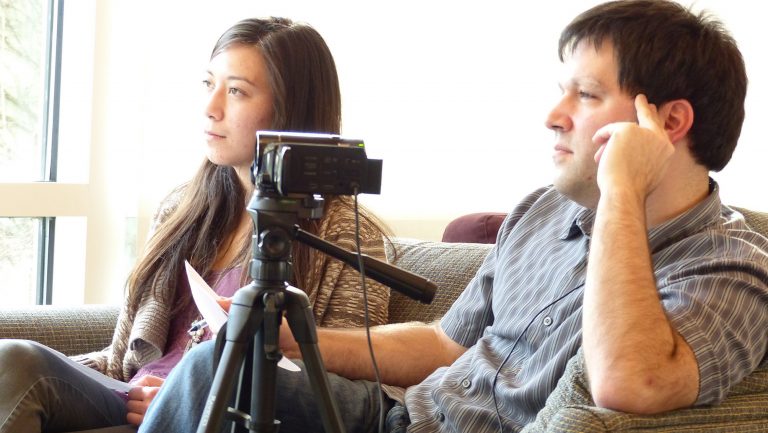
You have an hour-long video interview with Eric Asimov, who is obviously a wine-world figure but, as far as I know, does not have roots in Oregon. What are the criteria for being included in the archives?
The legitimacy of the wine program at Linfield has greatly increased over the past year. Grace and Ken Evenstad, the owners of Domaine Serene, just donated $6 million to the school. That will endow a chair in the wine education department, to be held by Dr. Greg V. Jones, a climatologist, whose parents own Abacela in Southern Oregon. And we’ll have a wine studies major.
As Linfield has become more established within the wine industry, we see cool international and national wine people coming to campus. We see people like Eric Asimov stopping by, or Allen Meadows, who runs Burghound.com. When I read that Eric was coming to IPNC, I tweeted to ask him if he’d like to do an interview, and he said “Sure!” When people are here on campus and we have a chance to capture them, we’re going to interview them!
The majority of the interviews are with winemakers and grape growers, but there are also interviews with professors, magazine editors, and marketing experts.
There are so many tangential jobs that you wouldn’t necessarily think of. Last year we interviewed the folks at Cellar Ridge Construction. They built a whole bunch of the new wineries and tasting rooms in the area. We interviewed people who are doing consultancy work, like Deb Steinthal at Scion Advisors. A big part of her business is winery transitions—either when [a winery is] sold or [is] passing between generations. I also interviewed Jeremy Schubert from Lunabean Media in Portland, who does website marketing. We really wanted to give a bigger picture of the industry.
How did you and your staff come up with the basic questions you ask each person? For instance, you start each interview with “Why wine?”
“Why wine?” is a really good way to start because it gets people talking. Some people talk for 20 minutes just answering that question. We have a template of about 20 basic questions. Some of them are about winemaking philosophies; some are attuned to different roles in the industry. And the rest of the research is done online. You can figure out pretty quickly what a person is passionate about. I don’t have a background in interviewing—I had to learn on the fly. A lot of it is just active listening.
What story or stories have stayed with you?
One of the first [interviews] I did was with Stephen Cary, the winemaker at Yamhill Valley Vineyards. He just died the last week of April. He was a fantastically nice person—incredibly modest and unassuming. My preconceptions about wine were unfair. I had expected a lot more ego.
Stephen was one of the original organizers of the Steamboat Pinot Noir Conference in the ‘80s. He was also one of the organizers of the Burgundy Challenge in 1985. He and Myron [Redford] were in New York City at the International Wine Center, and the director told them, “These Oregon wines are pretty good. They’re like good Beaujolais.” And Stephen said, “These are better than Beaujolais. Let’s do a blind tasting!” They had all these fancy judges out of New York City and they had two tasks: identify whether the wine was from France or from Oregon, and pick your top three favorites. Oregon got five of the top seven slots. No one could believe it at the time. Susan Sokol Blosser said that at that point, they had decided not to make wine anymore because they couldn’t sell it. Then they sold out in three months! And the rest is history. These two monumental things Cary had done—and yet he was just this modest, unassuming guy.
The other [interview] that’s always stuck with me was with the Campbells at Elk Cove Vineyards, one of Oregon’s earliest winemaking families. We did this whole interview with Pat and Joe, and they were like, “Do you want any food?” So they served us lunch and then we went back into the interview with their kids, [current winemaker] Adam and Anna [a photographer and now creative director of the winery]. So the interview starts with Pat and Joe. Pat and Joe were driving a VW across Oregon and it breaks down. They said, “It’s a hillside—let’s grow wine!” And then you have Adam talking about expansion and building a new vineyard. You have this founding generation that was able to do it out of a force of will, and a second generation doing it as a business. You see both worlds.
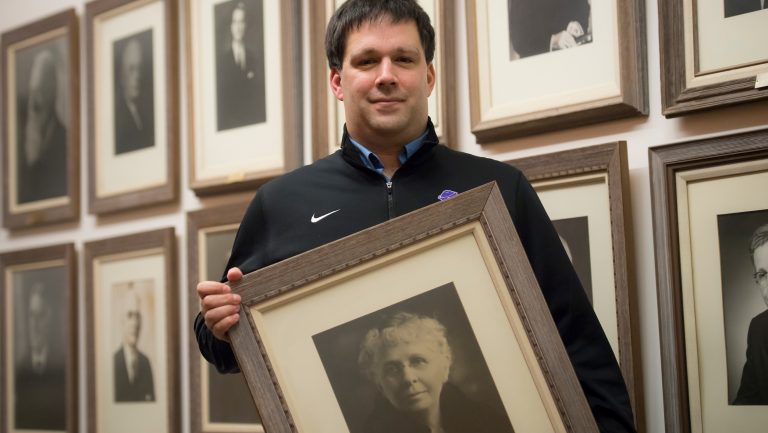
What about Oregon wine country has changed the most since 1961, when wine vines were planted for the first time since Prohibition?
Size is the biggest—we have wine tour guides from the ‘80s bragging about all 46 Oregon wineries! And that was a big deal—before that, we had 12.
Also, especially over the last 10 years, there’s so much competition. We’re seeing a big rise in, “How do I personalize my story and make it different than my 600 neighbors?” There’s a need for differentiation. Consumers are more educated. Winemakers always assumed people weren’t interested in soil, Brix, skin contact, dry farming, biodynamic, Salmon Safe. But people are interested in those things.
The other change—and this is the saddest for me to see—is that it’s turning into an industry. Obviously, that’s good—it’s how people make money, have jobs. But you’re never going to find another Campbells again, planting a vineyard because it was land that no one wanted. You have to have millions of dollars if you want to start a winery in Oregon now.
What was the most shocking thing you learned since working on this project?
What I’ve been stunned by is the degree of thoughtfulness and the extent of long-term view that Oregon winemakers have had since early on. In the 1960s, you had a bunch of guys from California, and they did almost everything exactly right, as an industry. They fought for labeling laws. They said, “We’re not going to make a red wine and call it a Burgundy. Our wines have to be purer than the federal standards.” They fought for land-use planning—they lobbied hard to protect land so it could be vineyard land. That’s how you have wineries in the Dundee Hills now.
You have Salud!—that addressed the need to pay for health care for vineyard workers. You have IPNC—planning a celebration of [Pinot Noir] and having it in Oregon. All this stuff was done, and they did it right. And there was no indication in 1966 [when vines were first planted in the Dundee Hills] that this was going to happen. All along, these people who had their own families and wineries to think about … were all able to work together through thick and thin and build an industry, slowly and surely and correctly, that has yielded this gigantic boom of Oregon wine.

Dispatch
Sign up for our award-winning newsletter
Don’t miss the latest drinks industry news and insights—delivered to your inbox every week.
Hannah Wallace writes about food, wine, sustainable agriculture, health, and travel for CivilEats.com, Inc., Food & Wine, Vogue, Portland Monthly, and the New York Times.

